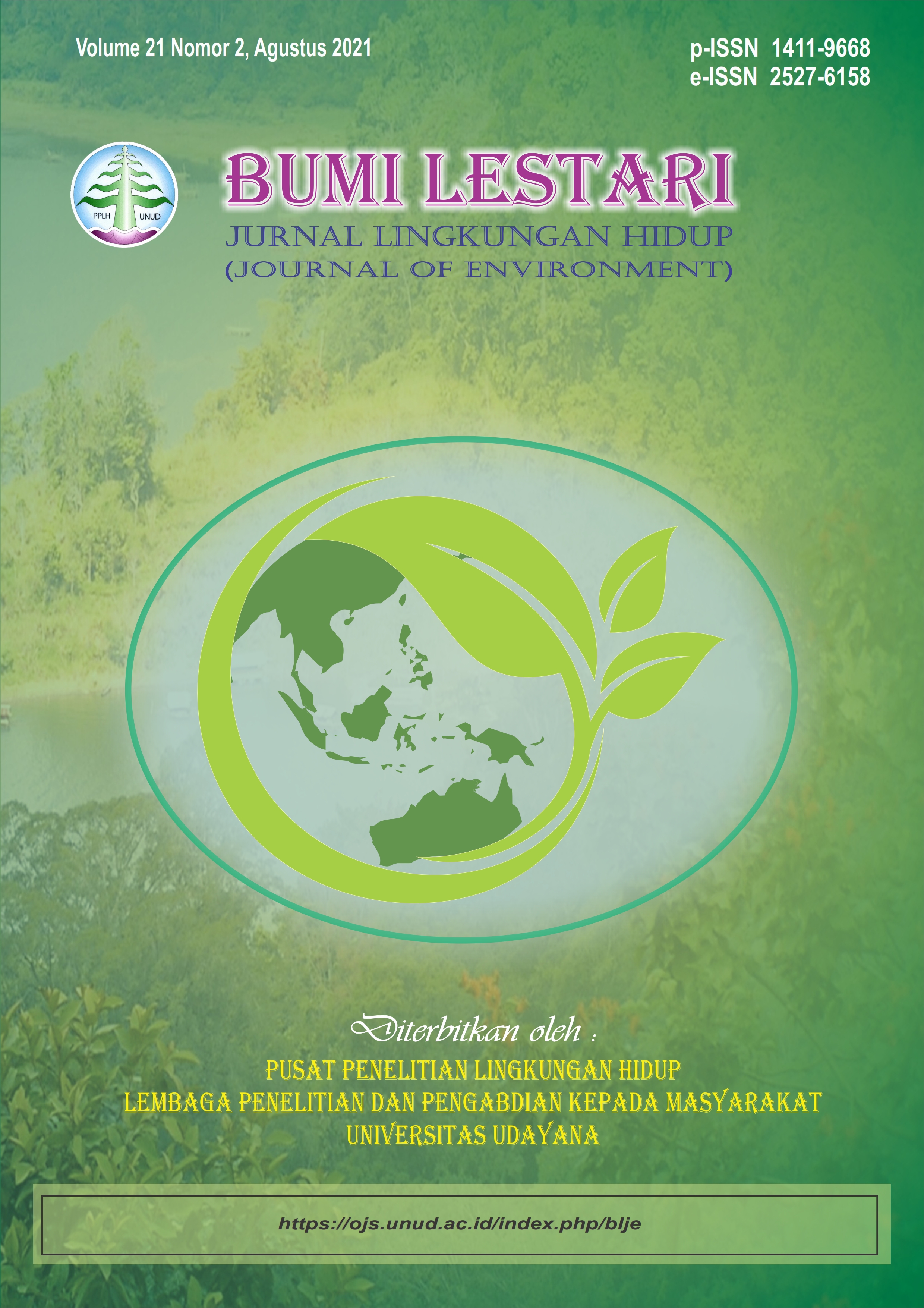Kapasitas Penyerapan Limbah Fosfat oleh Dua Tanaman Air yang Melimpah di Bali (Eichornia crassipes dan Salvinia molesta)
Abstract
Phosphate is known to be one of many pollutants in the aquatic environment causing environmental degradation. This study aimed to know the absorption rate of phosphate by two most abundant water plant in Bali (Eichornia crassipes and Salvinia molesta). This study used three treatments: treatment A (using Eichornia crassipes), treatment B (using Salvinia molesta), and treatment C (combination of both plants). Each treatment was performed in triplicate. The phytoremediation process was carried out in 14 days, and the measurement of phosphate in the water was carried out in every 7 days (day 1, day 7, and day 14). The other parameters measured in this study were: temperature, pH and Total Dissolved Solid (TDS). The concentration of phosphate was measured using Hanna HI-713 KIT, while temperature, pH and TDS were measured using: thermometer, pH meter, and TDS meter, respectively. Result showed that the most efficient treatment to absorb the phosphate in the water was shown by treatment using Eichornia crassipes (up to 37.4%).
Downloads
Authors who publish with this journal agree to the following terms:
- All articles published by Bumi Lestari Journal of Environment and Environmental Reseach Center Udayana University are made available under an open access license worldwide immediately. This means everyone has free and unlimited access to the full-text of all articles published in Bumi Lestari Journal of Environment, and everyone is free to re-use the published material given proper accreditation/citation of the original publication. Open access publication is supported by authors' institutes or research funding agency by payment of a comparatively article processing charge for accepted articles (See Author Fees). Bumi Lestari Journal of Environment and Environmental Reseach Center Udayana University publish articles under the Creative Commons Attribution License.
- Authors are able to enter into separate, additional contractual arrangements for the non-exclusive distribution of the journal's published version of the work (e.g., post it to an institutional repository or publish it in a book), with an acknowledgement of its initial publication in this journal.
- Authors are permitted and encouraged to post their work online (e.g., in institutional repositories or on their website) prior to and during the submission process, as it can lead to productive exchanges, as well as earlier and greater citation of published work (See The Effect of Open Access).





